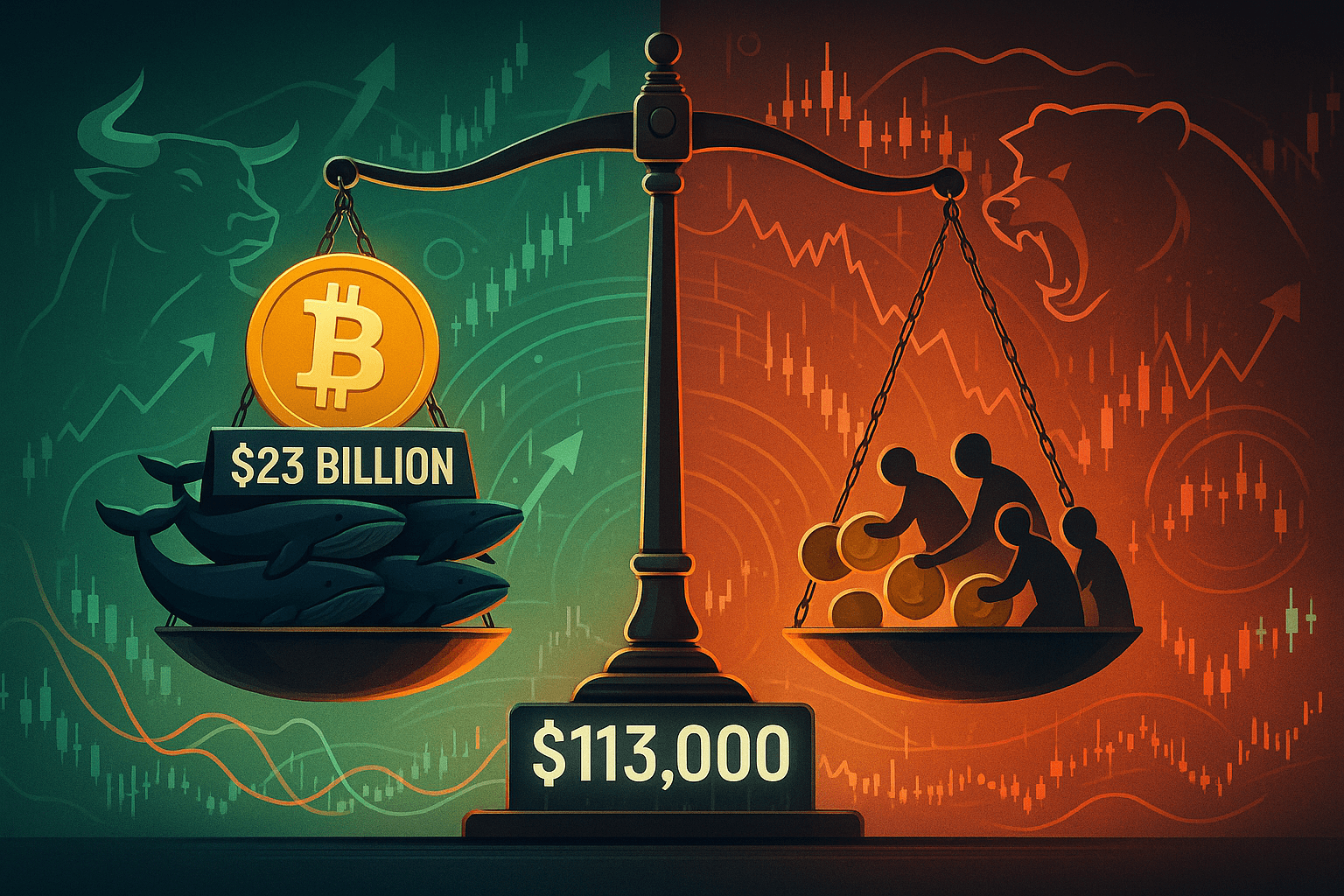
Bitcoin is now standing on the edge of a cliff at $113,000. This is not just a regular price point; it is a critical line that determines short-term trends. Technical analysis shows that multiple moving averages converge here, making it a key position where previous resistance turns into support. Calculating from the historical high of $124,176, it has retraced about 9%, a significant range in Bitcoin's historical movements.
The market is witnessing a spectacular showdown between bulls and bears. Retail investors are completely panicking, with short-term holders having sold over 20,000 bitcoins since Sunday. The worst day was Tuesday, when 23,520 bitcoins were sent to exchanges for sale. This panic selling typically reflects the mindset of retail investors: they rush to cut losses as soon as they see prices drop.
In contrast, whales are acting completely differently, as they are frantically buying. Data shows that large holders possessing between 10 and 10,000 bitcoins have purchased over 20,000 bitcoins since August 13, worth about $2.3 billion. Even more astonishing, since March, they have cumulatively increased their holdings by 225,320 bitcoins. What does this counter-cyclical accumulation behavior indicate? Large funds are optimistic about the long-term outlook, viewing the decline as an opportunity to pick up bargains.
The data from the options market is also quite interesting. The put skew has surged to 12%, reaching a four-month high, indicating that institutional investors are actively buying put options for protection. However, historical experience tells us that when panic sentiment reaches an extreme, it often signals a market reversal. A similar situation occurred in April this year when Bitcoin fell below $74,500 and rebounded 40% within a month.
Regulatory risks are also causing chaos. The SEC is investigating Alt5 Sigma, a company that has a partnership with World Liberty Financial, which raised $550 million through token sales. This regulatory uncertainty will suppress market sentiment in the short term, but from another perspective, regulatory intervention also means the industry is moving towards normalization.
The key now is whether $113,000 can hold. If it fails to hold, the next support might be in the $108,000-$110,000 range. However, if it stabilizes and rebounds here, reclaiming $115,000 could signal a push towards $120,000. Changes in trading volume are also worth noting; if there is a significant rebound at this key support level, it might mark the beginning of a new upward trend. For long-term investors, the continuous buying by whales is an important signal; for short-term traders, the gains or losses at $113,000 will determine their subsequent trading strategies.


